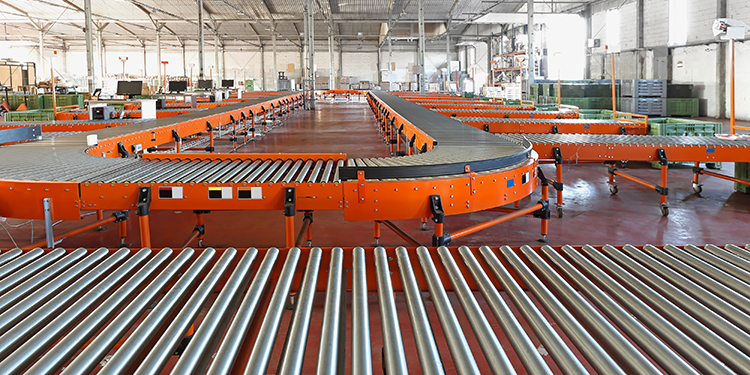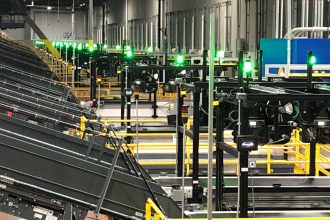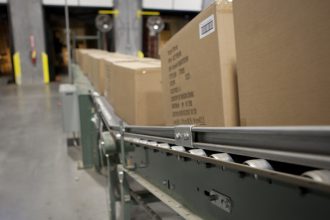Tips For A Smooth Conveyor And Sorter Design And Installation Process

Congratulations — you’ve gotten your organization’s top brass to approve the purchase of a new conveyor or sortation system for your warehousing, distribution or fulfillment facility. Yet, with many companies justifying the investment based on a specific go-live date, keeping the project on track, from start to finish, is of critical importance. That’s why the members of the Conveyors and Sortation Systems (CSS) Industry Group of MHI offer best practice recommendations for successful project management. The group — whose 30-plus members have completed thousands of projects ranging from small, initial automation investments to large, complex projects synthesizing integrators, multiple vendors, and different municipalities — suggests the following tips to minimize delays and disruptions throughout a new conveyor or sorter design and installation:
Build a solid relationship. Depending on the scale of the installation, such projects can take anywhere from three to 12 months. Therefore, it is important to designate key point persons for each phase of the project to answer questions, sign off on designs or revisions, and to regularly discuss progress. Frequent communication is one contributor to a successful partnership, as is transparency. Consider creating communication protocols that ensure regular, honest conversations about milestones, obstacles, alternative solutions, and other details to minimize the risk of surprises along the way.
Agree on the timeline at the outset of the project. At the initial project kick-off meeting, make sure the supplier and/or integrator understands the desired timeframe. Encourage them to discuss or explain any portions of the project that may take longer based on their past experience. Work together to establish a realistic project timeline and share any insights into internal chains of review that may conflict with the desired schedule.
Thoroughly review the design parameters before engineering work begins. Conveyor and sortation systems are designed based on specific characteristics of the products, parcels, cartons, or pallets they will be handling, as well as the user’s desired throughput rates. Other key design factors include available square footage within a facility, the existing layout of the building, and the other types of manual or automated material handling equipment that will interface with the conveyor or sorter. If any deviations from the original request for proposal (RFP) are anticipated — such as the introduction of polybags or the need to dramatically increase capacity during a certain period of the year — make sure those details are shared as soon as possible. This allows the system’s design and engineering team to create the optimal solution (or to recommend alternative handling options) for a given application without causing extensive delays for re-work or re-design.
Validate the proposed design will work prior to the move to manufacturing. Nearly all suppliers offer graphical simulation of their designs, allowing the end users to ensure that the new conveyor or sorter will work as anticipated. If any changes need to be made, it’s important to do so now, rather than during the manufacturing process — which can lead to costly scrap material fees and charges.
Understand what accommodations will be needed for a successful build. Some suppliers deliver key components pre-assembled and staged in sequence for delivery, minimizing the need for lay-down space within the facility. Others ship the entire system at one time, requiring the contracted installers to organize and layout the parts in empty floorspace within the facility prior to assembly and installation. It is important to understand how the components will be delivered and to designate the appropriate amount of space accordingly. To further smooth an installation and minimize delays, ensure the availability of a forklift dedicated to the project, preferably with extended-length forks to handle the long components associated with conveyor and sorter systems. Dedicating one or more dock doors for receiving of the system components will also minimize delays. Likewise, plan for additional dumpsters to handle the packaging material that protects the parts in transit to ensure adequate floorspace.
Designate an on-site point of contact for receipt and management of all system documentation. Sometimes in the process of unloading the components upon receipt, items — such as shipping paperwork, engineering drawings, maintenance manuals, and other documentation essential to the installation and operation of the conveyor or sortation system — can get misplaced. Assigning an on-site contact to receive and maintain these documents can speed up the construction and installation process.
Congratulations again on your new automated system. Hopefully these tips will ensure a smooth implementation that contributes to your company’s success for years to come.
Want to learn more about best practices when writing a conveyor or sorter request for proposal? CSS offers guidelines for the creation of a procurement specification covering the functional requirements, here.



